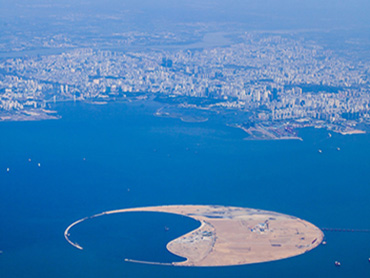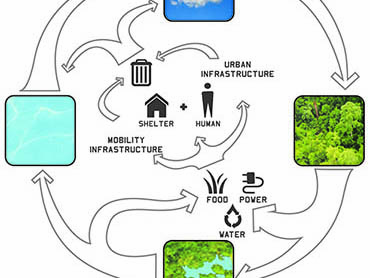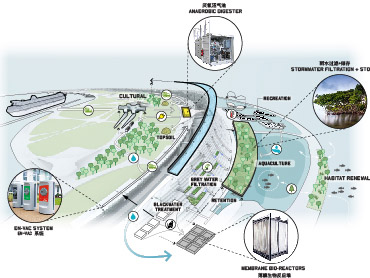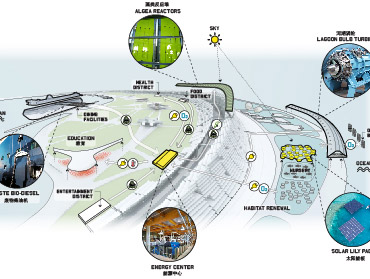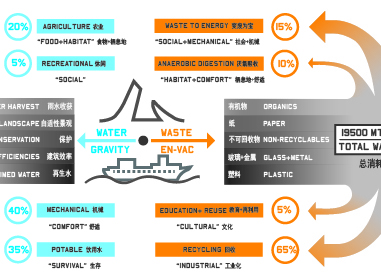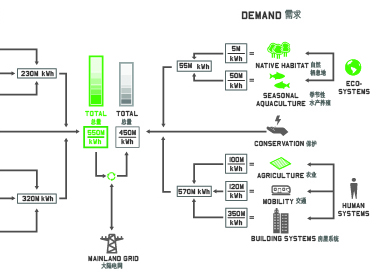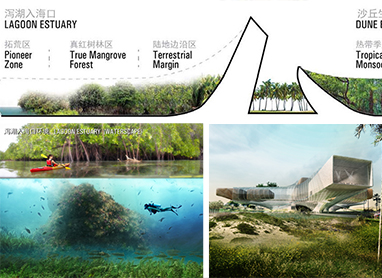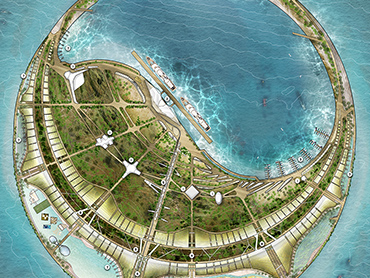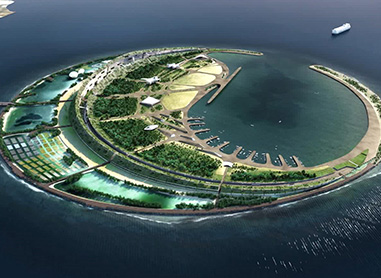South China Sea Pearl
Diller Scofidio + Renfro
Over the last century we have designed infrastructural systems that operate mostly
independent of the ecological cycles of local habitats. Water, food, and energy are traditionally
extracted from local habitat to support our community activities and waste bi-products are
then dumped into the vast territories of ocean and sky.
We now understand that this model of development is neither sustainable nor resilient to
seasonal and climate changes. We need to develop new a model of infrastructural interventions
over this century which adapts to participate within ecological cycles to improve health,
stimulate growth, and promote awareness. Ecological and human systems can become one
biosphere movement exchanging resources through a weave of simple relationships that evolve
to maintain balances necessary for survival and regeneration.
We have put together a diverse mixture of energy exchanges for the island that primarily draws
from the Sky and Ocean and is supplemented by waste cycles. But what is more interesting are
the new relationships developed between the utility infrastructure and surrounding habitat –
algae reactors, solar lilly pads, tidal lagoons, and cruise bio-fuel exchanges, fostering an
ecological dependence.
Algae reactors line the roof of the Caldera and absorb waste water and carbon dioxide from the
energy center to increase its reproductive productivity rates as well as remove carbon from the
air. From the algea we extract bio-fuel for energy which results in waste oxygen that is used for
health of people as well as the aquaponic nurseries. Lagoon bulb turbines are placed within the
tidal walls lining the estuaries creating energy from the flushing of the brackish bioswales while
aerating the artificial coast line to help promote the re-emergence of Molluscs.
Within the
lagoons we placed floating solar panels that act like lilly pads – creating shelter for the fish
nurseries and slowing down the evapotranspiration rates of the water supply. The water in-
return helps to slightly cool the solar panels increases their efficiency upwards of 10 percent.
In a partnership with the local cruise industry, eco-island will be a catalyst in the green cruise
movement by harness the energy from 5 tons of waste cooking oil a year.
Water and waste streams are essential to the success of the eco-island urban landscape and
and renewed habitats. The island design strives to recycle 100% of its water footprint and 95%
of its waste stream through both gravity based and en-vac infrastructure. To meet the baseline
water demand of 7200ML/YR, the project harvests rainwater, processes reclaimed water,
increases efficiencies, and stores water seasonally to offset municipal supplies. 19500 MT of
organic and non-organic waste is filtered through both the anaerobic digester and energy
center to create energy, heat sinks, and topsoil for creating the forest and dune landscape.
Under the Algae roof water is capture and funneled along the spine of the caldera and gravity
feed to the membrane bioreactors and storm water filtration beds. Both black and grey water
are treated through natural processes and stored within fresh water reservoirs that in times of
excess support agriculture, aquaculture and recreational practices. When water is scarce,
conservation measures recedes it back to the habitat for shelter from evapotranspiration under
the canopy of the mangrove trees.
It's an infrastructure mixture that both provides the water and energy needs of the island
communities – but also self generates the materials and nutrients necessary to promote growth
and resilience. In the end it's an integrated ecology of both habitats and human systems
promoting the health of one another. A new model to aspire to over the next century.
